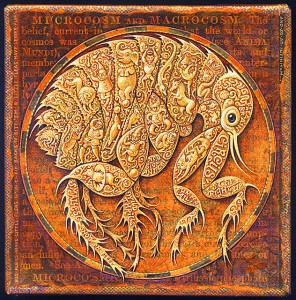 Fleas suck. They also bite. But feeding strategies and a millennia-spanning role in the spread of disease and misery aside, the parasitic insects also happen to be quite remarkable little biomechanical machines. The very definition of minuscule, these wingless wonders can easily jump 100 times their own body length, a skill that scaled to human dimensions would make even Superman seem a little earthbound in the leaping department.
Fleas suck. They also bite. But feeding strategies and a millennia-spanning role in the spread of disease and misery aside, the parasitic insects also happen to be quite remarkable little biomechanical machines. The very definition of minuscule, these wingless wonders can easily jump 100 times their own body length, a skill that scaled to human dimensions would make even Superman seem a little earthbound in the leaping department.
The flea’s secret lies not in extraordinary musculature or the rigorous training that made the old-time flea circus great, but in well-placed deposits of an elastic protein called resilin. (Imagine, roughly, a tightly-wound butt spring that can be tripped at a moment’s notice.) The resulting release of energy accounts for acceleration on the order of 150 g—150 times the force of gravity, or about 30 times the maximum experienced at Whistler’s lethal luge run in the 2010 Olympics.
The resilin spring was discovered decades ago, but it wasn’t until this week that biologists finally described the detailed mechanics of flea leaping in unequivocal terms. It has to do with pushing off from the toe rather than the knee, which might seem just a little inconsequential, the biological equivalent perhaps of the old debating exercise about dancing angels and needle tips. But the philosophers didn’t have high-speed videos of their conundrum. The entomologists do, and they’re just about as delightful as dancing angel toes, after the jump…
The work, published today in The Journal of Experimental Biology, was conducted by Gregory Sutton, a post doc in the Cambridge laboratory of Malcolm Burrows, a specialist in insect neurobiology. That field doubtless has many important academic and commercial implications, but the authors wisely avoided suggesting any for this study. Tying pure research to its potential applications is all very well and good. But sometimes the joy of discovery alone is enough reward. As the flea circus ringmasters of old knew well, the revelation of something tiny, precise and perfect can be enough to make the heart leap with the force of a mighty flea.
**
Credits Top: “Microcosmos (Flea Circus)” by Leah Palmer Preiss. Visit her flickr stream for more multimedia works as delightful as any hopping insect. Videos: Dr Gregory Sutton and Prof. Malcolm Burrows. Visit the Burrows lab for more leaping videos, including locusts, crickets and a glee-inducing leafhopper called Cephalelus.